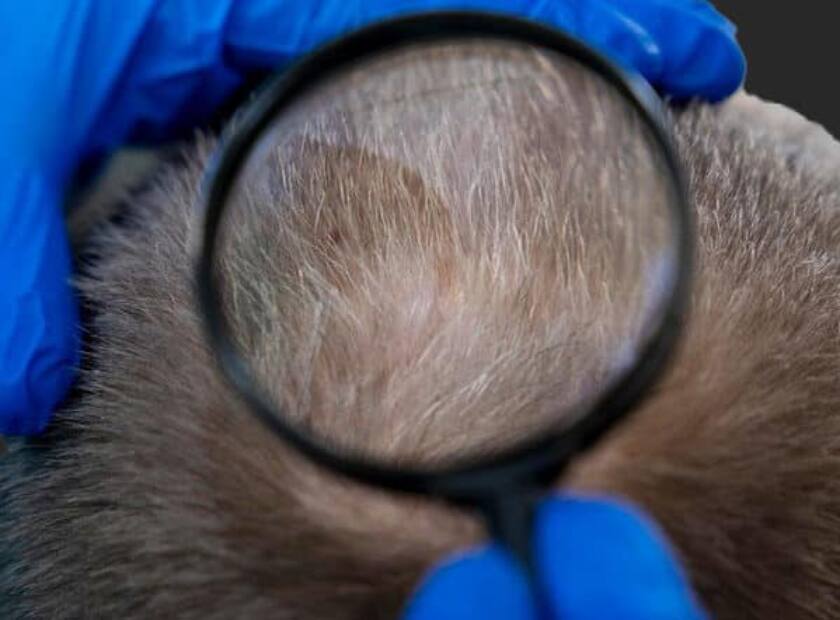
Can Pubic Hair Removal Cause Sexually Transmitted Infections?
Pubic hair removal in Iran
Whether shaving, waxing, or laser, pubic hair removal is common among men and women. In the United States, people aged 18 to 65 were surveyed. Approximately 84% of women reported that they remove their pubic hair, and about 50% of men reported that they get rid of their pubic hair regularly. But can this event increase the risk of sexually transmitted infections? We will examine this issue further.
• So far, research has not proven that removing pubic hair causes sexually transmitted diseases. However, removing pubic hair can cause skin damage, such as sores or scrapes, which may increase the risk of STIs or other infections.
• Having pubic hair is normal and has its benefits. Contrary to popular belief, removing pubic hair is not so much more hygienic, but the better solution is to cut it.
• Ultimately, removing pubic hair or keeping it is a personal decision.
• If you decide to remove your pubic hair, be aware of potential risks, take steps to reduce injury and protect your health.
Hair removal options range from temporary, such as shaving and waxing, to permanent, such as lasers with newer devices. Therefore, researchers sought to find out if there was a link between pubic hair removal and sexually transmitted infections (STIs).
Pubic hair removal and sexually transmitted diseases: What does the research show?

After examining 7,580 people in the United States — including men and women — a 2017 study found a link between pubic hair removal and self-reported STDs.
The study participants were grouped based on their pubic hair-trimming habits. Pubic hair trimmers were almost twice as likely to get an STI as non-trimmers. The risk of STIs was four times higher for those who removed their pubic hair more than 11 times a year.
It is important to note that in this study, those who trimmed their excess hair also had more sexual partners and more frequent sexual activities than those who did not trim their excess hair. Among the sexually transmitted infections reported, herpes, human papilloma virus (HPV), syphilis, chlamydia, and HIV were more common among men who were mending compared to non-men who were mending.
Of course, this does not mean that removing pubic hair causes sexually transmitted diseases. Although pubic hair removal and STDs appear to be correlated, this may be because shavers are more likely to be sexually active than those who have not shaved.
In contrast, a smaller 2019 study of 214 women found that shaving pubic hair did not appear to be associated with a higher risk of STIs. In the study, approximately 98 percent of participants reported trimming their pubic hair.
Those who shaved their pubic hair completely every week in the past year made up about 54 percent of the participants. However, only about 10% of participants tested positive for an STI, chlamydia, and gonorrhea. Overall, the researchers of both studies confirmed the need for more research to better understand the link between pubic hair removal and STIs. This means that the studies are not completely conclusive and the results cannot be used to prove that removing pubic hair increases the risk of STIs.
However it is known that sexually transmitted diseases are mainly transmitted through exposure to contaminated body fluids such as blood or secretions during sexual contact. And some sexually transmitted diseases are transmitted through skin-to-skin contact. For example, you may contract sexually transmitted diseases such as herpes, HPV, or syphilis by coming into contact with an infected person’s sore.
Depending on the method used, pubic hair removal can cause tiny tears in the skin, scratching, burning, and other damage around your genitals. Viruses and bacteria can enter your body through small cuts on the skin. When there is skin damage around your genitals during sexual activity, you are more susceptible to contracting or transmitting certain types of sexually transmitted diseases.
Do we need pubic hair?
Pubic hair is normal. It begins to grow during puberty and is a sign of sexual maturity. Contrary to popular belief, getting rid of pubic hair is not healthy. There is no scientific evidence that removing them has any health benefits. Scientists believe that pubic hair performs many functions, including:
• Reducing friction caused by rubbing during sex.
• Protect the sensitive skin around your genitals.
• Absorption of sweat from your genitals.
• Regulation of microbes that naturally live in the vagina.
• Prevent dirt from entering your genitals.
Are there any risks in removing pubic hair?

As with most things in life, pubic hair removal comes with risks. Injuries may occur during hair removal. Having a sore or even a small hole in your genital skin may make you more susceptible to certain infections – STIs or other infections. For example, removing pubic hair can cause:
• Small cuts, tears, or razor burns around your genitals from shaving.
• Burns caused by waxing.
• Skin redness, blisters, or wounds caused by laser hair removal.
• Skin irritation, genital rash, or itching after hair removal.
• Razor ridges caused by subcutaneous hair.
• Blisters and pimples around your genitals.
Other risks include:
• Pain caused by the hair removal process.
• Allergic reaction to the products used.
• Wounds that become infected.
• Infection from unsanitary hair removal methods.
How to reduce the risk of diseases caused by pubic hair removal?
If you prefer to go about your daily life without pubic hair, keep these tips in mind:
• Avoid removing pubic hair right before sex.
• Avoid sex if you have a cut or skin irritation.
• Use a clean razor to shave.
• Use a hand mirror to help you see out-of-reach areas.
• Avoid shaving to avoid scratching.
• Avoid sharing your hair removal products with others.
• Use hair removal chemicals with caution.
• Choose a clean waxing salon that follows proper hygiene protocol.
• For laser hair removal, contact a professional laser hair removal technician or a licensed skin center, and most importantly, try to use laser devices that are as unique as possible to each person during laser treatment. use.
• Trim your pubic hair instead of removing it completely.
Methods to prevent disease transmission by laser

If you use laser hair removal devices, the risk of transmitting sexually transmitted diseases during the laser will be close to zero by observing the following:
• Use of non-contact lasers: some types of hair removal laser devices have non-contact heads that perform laser without touching the skin. It is not possible to transmit genital warts, genital herpes or any other skin disease with these devices.
• Use of cellophane on the laser: If you go to centers that have a contact laser, they must use disposable cellophane on the contact head of the device. Drawing cellophane on the laser prevents the transmission of any skin disease to the clients, such as removing unwanted hair with a diode laser.
• Disinfecting the laser contact head with alcohol cannot destroy the HPV virus in a short period of time. So if alcohol is used instead of personal cellophane to disinfect contact lasers, there is a possibility of transmission of genital warts.
• Using contact lasers with a separate and unique series for each person: hair removal with the Alexandrite Candela 2022 device is one of the methods that requires a separate series for each person’s skin laser and a pair of glasses to prevent eye damage. The operator is given and the person is requested to bring his laser series and glasses until the end of the sessions.
• To prevent genital warts from being transmitted with laser hair removal, it is better to visit doctors’ offices and reputable centers.
Also, it is better to avoid laser hair removal in beauty salons and similar centers, because unfortunately many of these centers and salons cannot properly follow the health principles to prevent the transmission of diseases due to lack of sufficient knowledge.
• If you have active genital warts that have not been treated, you should not apply for bikini laser hair removal. Because it causes more warts and also causes the transfer of HPV from you to the next clients.
• Using contact lasers to remove unwanted hair on the face, armpits and areas other than the bikini area cannot cause genital warts to be transmitted to you. Because genital warts only occur in the bikini area, vagina and groin.
Therefore, with the help of the above methods, you can perform laser removal of your unwanted hair in complete safety and without fear of disease transmission through the laser device. If you decide to keep your pubic hair short and not remove it completely, you don’t have to do anything special, just washing with soap and water and keeping the area dry is enough.
Conclusion
In the end, you should know that some people, according to their culture and personal taste, prefer to be hairless in the genital area, and others prefer the natural process of hair growth in this area. The data related to the removal of pubic hair and the increased risk of sexually transmitted diseases are limited and more research is needed, so as it was said, no definitive theory has yet been expressed in this regard.
But in any case, be aware of the possible damage that can be caused by removing pubic hair, and take appropriate precautions. Protect yourself by practicing safe sex and taking steps to prevent sexually transmitted diseases. If you develop an infection or allergic reaction, see your doctor right away and don’t hesitate to talk to a dermatologist about your questions and concerns.
Visit a dermatologist
If the problem of eyelash loss is severe, it is recommended to consult a skin and hair specialist. They can introduce you to specific tips and products to solve this problem.
Get your free consultation with Irsa team right here
WhatsApp: 00989170626693
Email: irsaarabic@gmail.com
www.youtube.com/@irsaclinic
www.facebook.com/irsaclinic
Also read:
Applications of fractional CO2 laser






